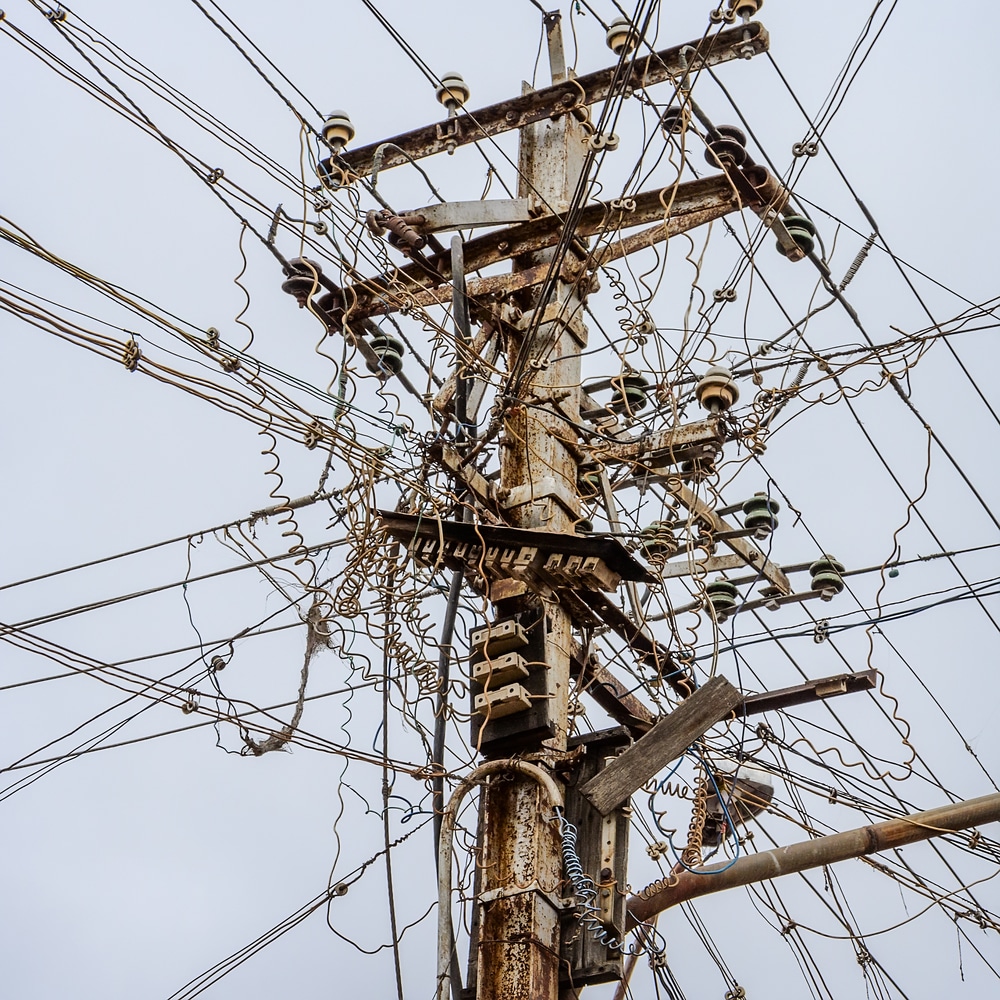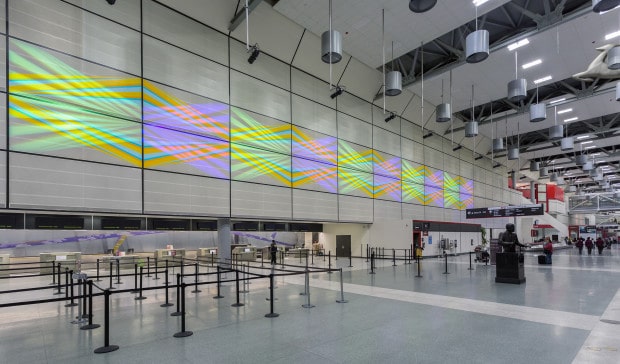
I have done a fair amount of consulting for houses of worship in my time, mostly new church openings, worship volunteer lighting tech training, and helping houses of worship to “tune up” their existing system, lighting console, and dimming. There is an amazing amount of entertainment lighting and structure in most modern houses of worship; the art of lighting services for worship is something that has come a very, very long way since… well, since the Quem Quaeritis, right?
Editor’s Note: For those of you who have no idea what I’m talking about, the Quem Quaeritis is basically the first piece of theatre that we have record for, and it’s a simple one. The gist of it is that it’s an Easter liturgy thing — and paraphrasing, it’s basically like this:
Person 1: Hey, who are you looking for?
Person 2: Ah, we’re looking for Jesus of Nazareth!
Person 1: Oh. Well, he has risen. Go tell somebody!
Yeah, I’ve paraphrased, but the gist is there:
Question [by the Angels]: Whom do ye seek in the sepulcher, O followers of Christ?
Answer [by the Marys]: Jesus of Nazareth, the Crucified, O heavenly ones.
The Angels: He is not here; he is risen, just as he foretold. Go, announce that he is risen from the sepulchre.
–John Gassner, editor, Medieval and Tudor Drama.
Yeah. Something like that. Quem Quaeritis? Check!
Ok, that little bit of history lesson from the way distant past is over.
So — the entire point of this whole post was to address something I found in a magazine called Technologies for Worship Magazine (or TFWM) about lighting for worship video. Kevin Rogers Cobus wrote an article about lighting for video or lighting for the audience that was pretty intriguing, quoting Tony Hansen from Techni-Lux, Inc. about some basic fundamentals of lighting for video. There are some really notable quotes in there, but there is one quote that sticks by me:
“I can’t tell you how many churches I go into that tell me, ‘We’re putting in a half-million dollar video system and we have twelve par cans,’” says Hansen. The intention is there, but you are setting yourself up for failure. You’ll be capturing superior quality video of a lackluster stage.
On the other hand, if your goal is to have an adequate look for your lighting on stage as well as a decent capture of that stage look on video (notice how the word “pristine” is not used) then that is an attainable goal. It requires balance, and compromise.
You have to start with your vision and work the technology in, as opposed to purchasing technology because you think it will solve problems for you. It won’t. It’s great to dream big and have a lot of vision, but you have to be realistic about the limitations.
This is a really, really unfortunate course of events in our industry that takes on form after form in front of my eyes — the absence of a trained lighting designer in houses of worship. Now this is not the whole, as there are many outstanding LDs out there working in worship, like lighting designer Jon Griffin at Saddleback Church in California. But there are many houses of worship out there with volunteer people “designing” the lighting for their internationally televised and recorded worship broadcast, which means that a lot of times they get to record and broadcast some pretty repugnant lighting. Now why, if a church is going to spend a half-million on a new video system, would said church never hire a professional quality lighting designer to give that half-million dollar video system the food it needs to make good video? Would you hire someone unqualified to repair the HVAC in the building?
A professional quality lighting designer with some solid background and reputable shows under their belt is not hard to come by these days, especially one who will work Sunday and Wednesday services plus all of the programming and installation that goes along with those shows. Now why wouldn’t a house of worship that has a half-million dollar video system (or more, more than likely) spring for a pro lighting designer to make an interesting and evenly focused stage for the broadcasts? It escapes my mind, too. This is not to say that a person with no training and no lighting design education can never design a production, quite the opposite, actually. But when you’re pouring money by the hundreds of thousands of your congregation’s donations into a new video system, shouldn’t you have a professional come in and give you their best hypothesis on what your house of worship needs with respect to lighting your broadcast videos?
Kevin writes in his article, Myth: Your Video Will Look Just Like Your Live Stage:
Hansen uses audio as a comparison–something lighting people seem to do a lot when they need to simplify an explanation. “You can have the best sound system in the world with the best microphones, but if the singer is garbage, the output is garbage. There is no such thing as auto-tune for video.”
This is an outstanding comparison, because it’s right on with lighting. If you don’t have an evenly lit stage, video won’t fill in the dark gaps. Quite the opposite — the camera sees the darkness and expands upon it. Darkness will be found by the camera’s eye, even if the audience can be fooled by it. If you have a hole in your front light, the camera will find it. If you have a ill-focused backlight, the camera will find it. If you have a fixture that is about to pop its lamp (meaning that it’s super bright onstage… THE CAMERA. WILL FIND. THAT SPOT. Is this really news to anyone?
Kevin raises some ideas of note in his article that I’d love to address. Kevin calls them Rules. Kevin’s Rules from the article:
- Use Top Light
- Don’t Use Too Much Light
- Don’t Light the Audience
This is where I have to ask the JimOnLight readership for your opinion. Don’t these “rules” seem a bit — well, off? Let’s look at these Rules. Keep in mind, I am not slamming Kevin Cobus’ article, but there was something that just did not sit well with me when I read the magazine. Also to be fair, Kevin subtitled his article, “A Lighting Designer Offers His Opinion.” That’s pretty much what I do. For example:
Rule #1: Use Top Light.
Jim’s Rule #1: Use Back light.
Does this make any sense to you? I have been wracking my brain trying to make this one make sense, but all I can come up with is what my mentor Mary Tarantino told me once while lighting one of my first grad school productions – and I have to paraphrase because I’ve slept since then:
“Watch a dancer under top light. The top pushes them into the floor, but if you pop their form with backlight, you literally push them away from the background.”
I have been lighting like this for years, and I had to find some examples of worship lighting that help support my theory. My dad likes that Joel Osteen guy, even though he’s one of those multi-kabrillionaire pastors that definitely doesn’t need my help for people to flock to his website. Here’s Joel Osteen with some backlight:
Backlight. Pushing Joel Osteen away from the background.
More backlight. Do you see how it allows for a really nice sculptural look?
Check out the backlight. Consequently, check out the poorly colored Joel Osteen on the Stage Right screen, too. The backlight in the image above is also focused in pairs of backlight; a downstage focus and an upstage focus. Keep in mind, this is MY opinion. I think backlight is a superior angle to toplight for film. Again, my opinion.
Rule #2: Don’t Use Too Much Light.
Jim’s Rule #2: Use Enough Light.
What IS too much light, exactly? Does it mean to balance out the fronts from the backs from the sides? Does it mean to watch the program feed to make sure that you’re not washing out your faces and blooming the colors on screen? To me, it means to balance to four and a third for the camera, and make sure not to wash out everything on the camera. My guess is that in a lot of occasions the guy shading the cameras is also a volunteer, too – why make his or her job more difficult?
Here’s some examples of “enough” light being used instead of “too much.” What do you think?
Here’s another:
Now who is to say this is “right” lighting? There is one thing that I have learned in my career that will always live with me — the client AND the audience will never think your dark, moody lighting is as good as seeing smiles and teeth. Learn this, young LDs, it is something you’re going to get pissed off about for many years unless you learn it right up front. It’s not to say that you can’t add in a nice color-rich look or a great looking aerial, but make sure that you can see those teeth. It’s always better to dial back the intensity rather than to tell the producer or worship director that you don’t have any more intensity to give.
Rule #3: Don’t Light the Audience.
Jim’s Rule #3: LIGHT THE AUDIENCE if you’re going to be broadcasting. LIGHT THE AUDIENCE if you want to see them.
This was a hard one for me to swallow, mostly because the audience shots are often the things that tie the message together. if your Pastor or worship leader says “It is wrong to lie to your spouse, God doesn’t want you to do that,” and you reinforce it with some worshippers agreeing with nodding heads, you have just allowed the people at home to relate to the people listening to the Pastor. If you have the same message followed by just more of the Pastor’s face, do you think you’ve effectively reached your audience?
Here’s some image research to support this hypothesis:
and from Richard Cadena’s book of the same idea:
Keep in mind that these are just my opinions. Light is not an easy thing, it gives most of us who study it a lifetime of excitement and wonder. Bad lighting on video is as bad as bad video.
Please check out Kevin Rogers Cobus’ article — it’s a great read and a great article, even if I disagree with it — probably especially because I disagree with it! Please check it out and support a fellow professional.
Thank to the following sites for photo links: 1, 2, 3, 4, 5, 6, 7, 8














Love the article Jim! Thanks for drawing some attention to the amount of lighting gear hanging in churches and the gap of understanding about the need for experienced professionals to put all the equipment to use…properly. It’s refreshing to hear the voice of an experienced, qualified professional amidst the blogasphere of “church lighting” which is so often filled with incorrect or poorly applied guidance. Thanks for bringing some reality to the conversation- the fundamentals of lighting still apply. No matter the size of the rig, or the venue- church or otherwise.
Comments are closed.